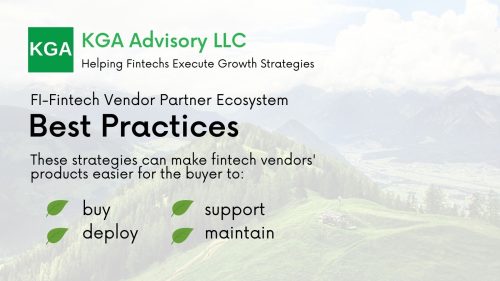
This will complete the series of posts in which we’ve covered how fintech vendors’ solutions that are API-first and ecosystem-driven are not delivering to FI buyers. The under-performance is due to poor execution.
In exchange for a promise of great flexibility, the solutions are too complex and put too much work on the buyer. In our last post, we described the FIs’ pain. Here, we conclude by covering some of the best practices a vendor can use to balance flexibility with simplicity.
These will make their products easier for the buyer to buy, deploy, support, and maintain.
Segment Buyers
It is critical that the fintech vendor design its solution (including its partner ecosystem) with different financial service buyer-profiles in mind. The optimal balance of flexibility and simplicity will vary by buyer-profile. For example, the buyers that want an “XXXX-in-a-Box” solution will have little interest in a highly flexible solution.
Offering different solutions to meet the “balance” needs of different buyer-profiles often does NOT require changes to the vendor’s product platform; balanced solutions can usually be offered via packaging of existing functionality.
Offer More Guidance
Many vendors promote an API-first, ecosystem-centric solution with a message like “there are an endless number of things you can do with our solution to meet your unique needs”. “…an endless number…” puts much too much pressure on the buyer.
Vendors can guide the financial services buyer via practices like below; there are many more:
- Have a few off-the-shelf architectural designs for buyers of different profiles
- Provide examples of proven migration strategies when a legacy system exists.
The off-the-shelf and templated artifacts will never match each new buyer exactly. The vendor solution engineering and client onboarding processes must help the buyer customize the templates.
Vet the Ecosystem
A large ecosystem overwhelms many buyers. The vendor should “vet” the ecosystem partners that have the greatest market penetration. Usually there are a very small number of partners that would be considered industry leading. “Vetting” would include:
- An ongoing relationship between the vendor and the industry-leading partners with at least baseline, standard commercial terms for FI buyers
- Maximum pre-integration with cross-vendor product knowledge and experience
- A well-thought-out service design across the vendors which simplifies for the buyer the customer support, code release, and other practices.
Provide Enabling Supports
Some of the other ways the vendor can help the financial services buyer include:
- During the sales cycle, provide visibility to and best-practices on how the buyer can best undertake the work it will do
- Deliver low-/no-code tooling for integration, migration, and ongoing data extraction.


